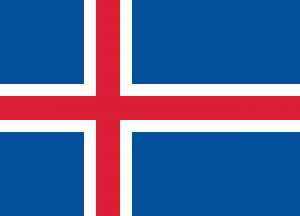Language/Icelandic/Grammar/Gender
Hi Icelandic learners! 😊
In this lesson, we will be covering Icelandic grammar, specifically the concept of gender. Gender is an important aspect of Icelandic grammar that learners must understand to properly speak and write in Icelandic. We will cover everything you need to know about gender in Icelandic, and provide examples and cultural insights to help you grasp this grammatical concept. Don't worry if you find it challenging at first, with practice and dedication you will soon master it. 😎
Consider broadening your understanding by checking out these related lessons: Negation & Prepositions.
What is gender in Icelandic?[edit | edit source]
Gender in Icelandic is a grammatical feature of nouns, pronouns, and adjectives that signify whether a word is masculine, feminine or neuter. Each gender corresponds to different noun endings, adjective forms, and pronoun inflections. The knowledge of gender is crucial in Icelandic since it determines the declension pattern of a noun or adjective. It also determines the pronoun's endings and the verb conjugation. It is important to note that gender is not biologically determined in the Icelandic language, and there are few rules to help learners determine which gender a word has. Therefore, the gender of a noun must generally be memorized as it cannot be deduced from its meaning or suffix.
For simplicity, we will use the following abbreviations to indicate gender in tables:
- Masculine (m)
- Feminine (f)
- Neuter (n)
Gender rules[edit | edit source]
The following rules will help you determine the gender of a word in Icelandic:
Rule 1: Noun endings[edit | edit source]
Nouns ending in -ur, -i, and -lingur are generally masculine.
| Icelandic | Pronunciation | English |
|---|---|---|
| fiskur | fiskur | fish (m) |
| hjálpari | hjálpari | helper (m) |
Nouns ending in -a, -ing, -un, -ari, -kona, and -rækt are generally feminine.
| Icelandic | Pronunciation | English |
|---|---|---|
| bók | boʊ̯k | book (f) |
| námsmaður | nau̯msmaðʏr | student (f) |
Nouns ending in -ð, -t, -leiki, and -eri are generally neuter.
| Icelandic | Pronunciation | English |
|---|---|---|
| borð | pɔrð | table (n) |
| net | nɛht | net (n) |
Rule 2: Word meaning[edit | edit source]
The meaning of a word can often hint at its gender. For example, Icelandic words relating to people, animals, and professions tend to follow gender norms.
| Icelandic | Pronunciation | English |
|---|---|---|
| sonur | sɔːnʏr | son (m) |
| dóttir | tʰou̯htɪr | daughter (f) |
Rule 3: Borrowed words[edit | edit source]
Words borrowed from other languages may not follow Icelandic gender rules, and the gender of such words must be memorized. For example, the word "sjónvarp" (television) is a neuter noun even though it ends in -ar and is similar in meaning to "sænska" (feminine) or "bandarískur" (masculine).
| Icelandic | Pronunciation | English |
|---|---|---|
| sjónvarp | sjou̯nvart | television (n) |
Gender agreement[edit | edit source]
Adjectives, pronouns, and verbs must agree in gender with the nouns they modify. Failure to agree in gender is a common mistake made by learners of Icelandic, and it can hinder communication.
Here are some examples of gender agreement:
- Hann er gamall. (He is old.)
- Hún er gömul. (She is old.)
- Barnið er ungfrú. (The child is young (f).)
- Stólarnir eru gulum. (The chairs are yellow (m).)
Notice how the endings of adjectives change to match the gender of the noun it modifies, and how the verb "er" changes to match the gender of the subject pronoun.
Examples[edit | edit source]
Here are some common nouns and their genders in Icelandic:
| Icelandic | Pronunciation | English |
|---|---|---|
| köttur | kœhtʏr | cat (m) |
| hestur | hɛstʏr | horse (m) |
| konni | kʰɔnːɪ | woman (f) |
| sæta | saita | sweetie (f) |
| epli | ɛhtlɪ | apple (n) |
| gler | kler | glass (n) |
Cultural insights[edit | edit source]
Gender has played an important role in the Icelandic culture throughout history. In the old Icelandic sagas, characters often had gender-specific roles and traits. For example, men were expected to be strong and brave, while women were expected to be beautiful and gentle. Furthermore, Icelandic nouns for people vary depending on gender, which can affect the meaning of a sentence.
Icelandic culture also celebrates gender equality, and the country has come a long way in achieving this goal. Iceland has been ranked number one in the World Economic Forum's Global Gender Gap Index for the past ten years, indicating the country's commitment to gender equality.
Dialogue[edit | edit source]
To help you understand gender in context, here is a dialogue between two Icelandic friends:
- Kristín: Hefur þú mætt á námskeiðið í dag? (Have you attended the course today?)
- Bjarni: Já, ég var þar allan daginn. Hversu langt hefur þú komið í greinunni um bönd? (Yes, I was there all day. How far have you come in the chapter about bonds?)
- Kristín: Ég hef ekki byrjað á því ennþá. Ég fór í bókabúð í gær og keypti nokkrar bækur um saga. (I haven't started it yet. Yesterday, I went to a bookstore and bought some books about history)
- Bjarni: Hvernig eru bækurnar? (How are the books?)
- Kristín: Áhrifamiklar! (Influential!)
Sources[edit | edit source]
- Icelandic grammar - Wikipedia
- Gender | Icelandic Grammar Reference
- Icelandic Nouns - ielanguages.com
Don't forget to practice your Icelandic skills using resources like Find native speakers and ask them any questions. Also, check out Polyglot Club for more language resources.
➡ If you have any questions, please ask them in the comments section below.
➡ Feel free to edit this wiki page if you think it can be improved. 😎
Other Lessons[edit | edit source]

